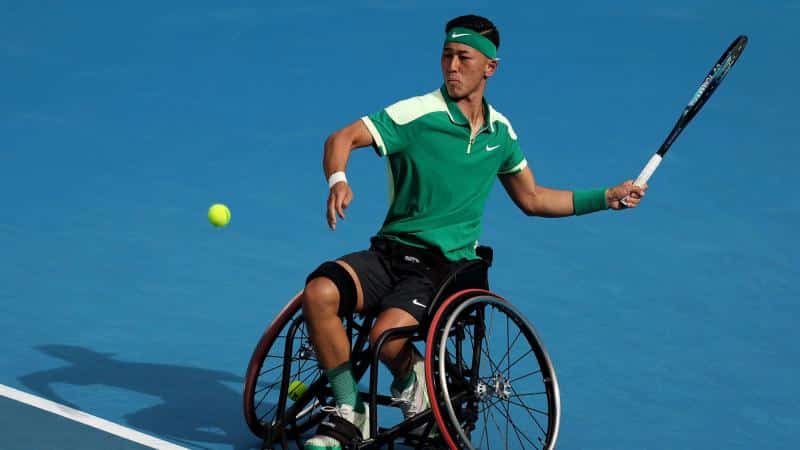All About Wheelchair Tennis at the Paralympics

Image Credit: paralympic.org
Wheelchair tennis Paralympics is more than just a sport; it’s a powerful display of strength, determination, and skill. Athletes in this sport push their physical limits and challenge the way people see disability. This article will take you through the history of wheelchair tennis Paralympics, the special rules, and the inspiring athletes who have made their mark on the Paralympic Games.
The Evolution of Wheelchair Tennis
The story of wheelchair tennis in the Paralympics is one of passion and progress. It demonstrates how sports can break barriers and bring people together. Wheelchair tennis began in the 1970s, thanks to Brad Parks, an American athlete who adapted the sport he loved after a serious injury. What started as a recreational activity soon grew into a competitive sport, gaining widespread attention.
The sport gained international recognition in the 1980s, with tournaments springing up around the world. By the 1990s, wheelchair tennis had established itself as a major sport, leading to its inclusion in the Paralympic Games.
The Rules of the Game: Wheelchair Tennis Paralympics
Wheelchair tennis made its debut as a demonstration sport in the 1988 Seoul Games. It officially became part of the Paralympics in the 1992 Barcelona Games, marking a significant milestone. While wheelchair tennis closely resembles standard tennis, there are special rules for the athletes.
- The Two-Bounce Rule: One key difference in wheelchair tennis is the two-bounce rule. This allows the ball to bounce twice before being returned, with the first bounce landing within the court boundaries. This rule adapts the game to the physical demands of the sport while maintaining its competitive nature.
- Categories of Play: Wheelchair tennis is divided into two main categories: the open division and the quad division. The open division includes players with lower-limb impairments, while the quad division is for those with impairments in both the upper and lower limbs.
Training Regimens
In wheelchair tennis, the wheelchair becomes an extension of the player’s body. Athletes must master their tennis skills and the ability to maneuver their wheelchairs with precision. The wheelchairs used are specially designed for agility and stability. Becoming a Paralympic wheelchair tennis player requires hard work and intense training.
- Physical Conditioning: Physical training is crucial in wheelchair tennis. Athletes focus on building upper body strength and improving endurance to maintain performance throughout long matches.
- Mental Toughness: Mental conditioning is also essential. Athletes in wheelchair tennis need exceptional mental resilience to handle competition pressures and physical demands.
Famous Paralympic Wheelchair Tennis Athletes
Many athletes have become famous for their success in wheelchair tennis, inspiring others with their achievements.
Shingo Kunieda: Shingo Kunieda is one of the greatest players in wheelchair tennis. With numerous Grand Slam titles and Paralympic medals, Kunieda’s career showcases his skill and determination.
Diede de Groot: Diede de Groot has dominated women’s wheelchair tennis recently, winning multiple Grand Slam titles and Paralympic gold medals. Her success has made her a legend in the sport.
The Impact of Wheelchair Tennis on the Paralympics
Wheelchair tennis has greatly impacted the Paralympic Games, increasing its popularity and influencing other adaptive sports. The sport has elevated the profile of the Paralympics, showcasing the incredible athleticism of its participants. Beyond the medals and records, wheelchair tennis is full of stories of personal triumph. Athletes like Esther Vergeer, who overcame significant challenges to become a top player, embody the spirit of the Paralympics and inspire millions worldwide.
Playing wheelchair tennis comes with challenges. Athletes face physical demands, emotional pressures, and logistical issues, such as accessing specialized equipment and training facilities. Despite these hurdles, they push the limits of what is possible.
The Future of Wheelchair Tennis in the Paralympics
As the Paralympic Games grow, so does the future of wheelchair tennis. We can expect advancements in technology, training methods, and international competition. With each Games, wheelchair tennis continues to inspire the next generation of athletes.
FAQs
What is the two-bounce rule in wheelchair tennis?
The two-bounce rule allows the ball to bounce twice before being returned, with the first bounce landing within the court boundaries. This rule helps adapt the game to the needs of wheelchair tennis.
Who is the most successful player in wheelchair tennis?
Shingo Kunieda is one of the most successful players in wheelchair tennis, with many Grand Slam titles and Paralympic medals.
What are the different categories in wheelchair tennis?
Wheelchair tennis has two main categories: the open division (for players with lower-limb impairments) and the quad division (for those with impairments in both upper and lower limbs).
How do athletes train for wheelchair tennis?
Athletes undergo rigorous training, including physical conditioning to build strength and endurance, and mental conditioning to develop resilience and focus.
When did wheelchair tennis become part of the Paralympic Games?
Wheelchair tennis became an official part of the Paralympics in 1992 at the Barcelona Games.
Also Read: Google Celebrates Wheelchair tennis Paralympics
Observer Voice is the one stop site for National, International news, Editor’s Choice, Art/culture contents, Quotes and much more. We also cover historical contents. Historical contents includes World History, Indian History, and what happened today. The website also covers Entertainment across the India and World.

